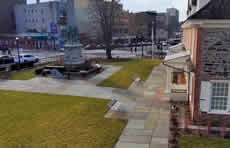NEW YORK PEOPLE SEARCH!
- ✔ Contact Info
- ✔ Phone Numbers
- ✔ Criminal Records
- ✔ Income Info
- ✔ Neighbors
- ✔ People's Age
- ✔ Property Ownership
- ✔ And Much More
Yonkers, New York
Yonkers is located in the south-eastern part and is the fourth largest city in the U.S. State of New York. It is known as the sixth borough of NYC. The city is the birthplace of the modern elevator, and the first working electrical engine were invented here. It has been ranked as one of the best U.S. places to live in.
Its location is only 1 hour by car from New York City and many people view it as the sixth borough. The city is considered to be a suburb of NYC but it is not a part of the New York City boroughs. It is a separate city in Westchester County.
To See And To Do In Yonkers
- The LEGOLAND Discovery Center
- The Untermyer Gardens
- The Hudson River Museum
- The Ridge Hill Shopping Malls
- The Philipse Manor Hall State Historic Site
- The Lenoir Preserve Park
- The Rory Dolan's Restaurant And Bar (Irish pub)
- The Yonkers Brewing Company
- The Nahmias Et Fils Distillery
- Broadway (the main street)
- The Science Barge Floating Greenhouse on the Hudson River
History Of Yonkers, NY - Timeline
In 1609, the English explorer Henry Hudson visited todays Yonkers to trade with the Native people. In 1639, the land was acquired by the Dutch West India Company. The land was once a major village of the Nappeckamack, of the Manhattan Indians.
In 1645, Adriaen van der Donck, a lawyer and landowner from the Netherlands, negotiated with the Native tribe for a large section of land. In 1646, he was given a land grant and he built several saw mills. The village was now founded.
In 1652, van der Donck established the large estate, patroonship of Colendonck. The locals referred him as the Jonkheer (young gentleman) because the estate was so large. In 1672, Frederick Philipse and his family bought a large section of the land which today is most of Yonkers. They were the richest family in the area at the time. In 1682, Frederick Philipse, built a manor, known as Philipse Manor Hall, that later was used as the Yonkers city hall.
In 1740, the Sherwood House was built by Thomas Sherwood. In 1752, the original St. John's Protestant Episcopal Church was built. In 1779, the Philipse Manor Hall was confiscated because Frederick Philipse's great grandson espoused the Tory cause during the American Revolution. In 1783, the Eleazer Hart House was built. In 1788, the Town of Yonkers was established.
In 1848, The first railroad station was built. In 1849, Yonkers was connected to New York City by railroad. In 1852, the Mott Mill historic cotton mill and silk mill was built. In 1853, Elisha Otis invented the modern safety elevator and in 1854, the Otis Elevator Works was established. In 1855, Yonkers was incorporated as a village. Ethan Flagg House-Blessed Sacrament Monastery was built that year. Ethan Flagg was the first President of the Yonkers Savings Bank.
In 1867, the city the first elevated mass transit system in the world. In 1869, the St. John's Riverside Hospital opened. In 1872, Yonkers was incorporated as a city. In 1874, the southern portion of old Yonkers was annexed to what became the Bronx. In 1877, the Glenview Mansion was built by the millionaire Wall Street banker John Bond Trevor. In 1888, John Reid, from Scottland, founded the Saint Andrew's Golf Club, the first golf course in the United States. In 1881, John Howard Northrop was born in Yonkers. He won the 1946 Nobel Prize in Chemistry.
In 1903, the Yonkers Trolley Barn was built. In 1914, the Proctor's Theater was built. In 1926, the Sarah Lawrence College was established. In 1927, the United States Post Office on main street downtown was built. In 1938, the actor Jon Voight was born in the city. In 1962, Antony Blinken was born in Yonkers. He served as the United States secretary of state from 2021 to 2025. In 1977, the postal employee David Berkowitz, the "Son of Sam", was arrested. In 2000, around 200.000 people lived in the city.

